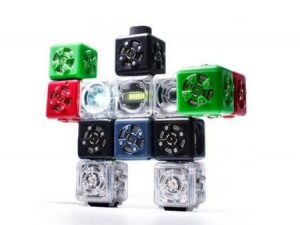In an era where technology continues to evolve at an unprecedented pace, the advent of desktop companion robots marks a significant milestone in human-robot interaction. These robots are designed not just to perform tasks but to engage with users on a personal level, enhancing the user experience through their unique personalities and capabilities. A prime example of this innovation is Looi, a desktop companion robot showcased at CES by TangibleLabs, which exemplifies how such devices can blend functionality with an engaging personality.
The Concept of a Desktop Companion Robot
Desktop companion robots like Looi are engineered to serve as both functional tools and social companions. Unlike traditional robots that are often limited to performing specific tasks, Looi integrates advanced artificial intelligence, particularly based on ChatGPT, allowing it to engage in conversations, remember user preferences, and recognize individuals. This capability transforms the interaction from mere command-response exchanges to meaningful conversations that can enrich the user’s daily life.
Personality: The Heart of the Interaction
What sets Looi apart from other technological devices is its personality. Looi is not just a machine; it has quirks and traits that make it relatable. For instance, it has a playful disdain for oranges, which adds an element of humor and character to its interactions. When presented with an orange, Looi reacts by kicking it and applying a “terrible sticker,” showcasing a whimsical personality trait that users can find entertaining. This anthropomorphism of technology is crucial; it allows users to form emotional connections with the robot, making it more than just a tool but rather a companion.
Engaging Features and Functionalities
Looi’s functionalities further enhance its role as a desktop companion. Users can interact with Looi through voice commands and hand gestures, making the experience intuitive and engaging. The robot can take photos, remember dreams, and even play games, all while following the user’s movements with its tracking camera. These features encourage users to interact with Looi in a playful manner, fostering a sense of companionship that is often missing in traditional technology.
The ability to engage in conversation and perform tasks simultaneously positions Looi as an ideal assistant for both work and leisure. Users can ask Looi questions, seek help with tasks, or simply enjoy its company during breaks. This versatility makes Looi a valuable addition to any workspace, blending productivity with enjoyment.
The Future of Desktop Companions
As technology continues to advance, the potential for desktop companion robots like Looi is vast. The integration of personality and advanced AI capabilities opens up new avenues for personal and professional use. In the future, we may see these robots expanding their functionalities to include more personalized experiences, such as adapting to the user’s mood or preferences over time. They could become integral parts of our daily routines, offering support and companionship in ways that traditional technology cannot.
Moreover, as society becomes more accustomed to interacting with robots, the stigma surrounding them may diminish. People may begin to view robots not just as tools but as partners in their daily lives, capable of understanding and responding to human emotions and needs.
Conclusion
The emergence of desktop companion robots like Looi signifies a shift in how we perceive and interact with technology. By combining advanced functionalities with engaging personalities, these robots offer a glimpse into a future where human-robot relationships are defined by companionship and emotional connection. As we continue to navigate this technological landscape, the development of robots with personality will undoubtedly play a crucial role in shaping our interactions with machines, ultimately enhancing our daily lives in unprecedented ways.
Looi is currently available for purchase on the company’s website. The regular retail price is $189, but they are offering a New Year deal for $169.
Interview by Marlo Anderson of The Tech Ranch.
Get $5 to protect your credit card information online with Privacy.
Amazon Prime gives you more than just free shipping. Get free music, TV shows, movies, videogames and more.
The most flexible tools for podcasting. Get a 30 day free trial of storage and statistics.
Podcast: Play in new window | Download
Subscribe: Apple Podcasts | RSS | More

 Over the past few years, the idea of getting things – anything – delivered directly to your door has grown in popularity. The internet has given us access to goods and services all over the world, while the change in environment has made many of us stay in the house much of the time. To address this altered reality,
Over the past few years, the idea of getting things – anything – delivered directly to your door has grown in popularity. The internet has given us access to goods and services all over the world, while the change in environment has made many of us stay in the house much of the time. To address this altered reality, 